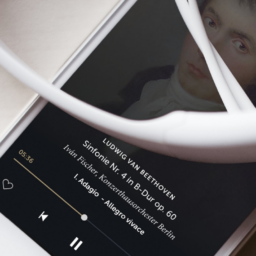An emerging void signals new opportunity for innovation in digital music.
The benefit of writing thoughts down is that you get to revisit them. Six years ago, I penned a piece for Hypebot called The Next MySpace. At that time, people in the music business were desperate to for another MySpace to emerge: the site had been a ray of hope, but as it collapsed, online music was scattered across an immature ecosystem of rapidly growing startups like Soundcloud, Bandcamp, Facebook, Spotify, and many others that were eventually acquired or perished and forgotten. I argued:
The closest we will ever get to a “next MySpace” will be either a music network or a social network that manages to gather, organise and integrate the fragments in spectacular fashion.
Defining the MySpace moment
What I call a MySpace moment is not when everything was going well for MySpace: it’s when decline set in. People started replacing MySpace’s music players, which sucked, with Soundcloud’s beautiful waveform players. People started moving much of their social lives to Facebook (for friends) and Twitter (to connect to strangers). Up until then, the dominant social network had been music-driven — people, especially teenagers, expressed their identities by making long lists of bands they liked.
From the ashes of MySpace, which never managed to recover, rose a new ecosystem of music startups. They’ve managed to make it easy for artists to connect to fans, get paid for online playback, let fans know about new shows, and be able to very specifically target people with ads.
That moment, that void, was a massive opportunity and many companies benefited from it.
That moment is here once again.
The new MySpace moment
There are two main factors contributing to a new emerging void for entrepreneurs to leap in. One has to do with product adoption life cycles, which I’ll explain below. The other has to do with the important position Soundcloud claimed in the online music ecosystem.
Soundcloud came closer to being the ‘next MySpace’ than any startup has. And let’s be blunt: the company is not doing well. After years of legal pressure to tackle the problem of works being uploaded to the service without rights holders’ permission, they were forced to adopt a service model that does not make sense for Soundcloud. The typical $10 a month subscription doesn’t make sense. People are on Soundcloud for the fresh content, the mixtapes, remixes, unreleased stuff: the things that will not be on Spotify for weeks or months (or ever!). Why inject the catalogue with music of long deceased people?
There have been reports that Soundcloud would consider any bids higher than the total amount of money invested into the company to date. That’s not a good sign. The road they’ve been forced into is a dead-end street, and the only end game is a quick acquisition.
I don’t think Soundcloud will die, but it is hard for the company to focus on what they’ve always been good at. Now that they’ve been forced into the Spotify model, those are the types of metrics that are going to matter. Subscriber numbers, conversion, retention. So it may struggle to do as good a job serving the audience they’ve traditionally serviced so well. (small note: I love Soundcloud, and the people there: prove me wrong!)
This leaves a vacuum.
Adding to that vacuum, is the fact that Spotify (and other streaming services) are looking beyond early adopters. To understand the phenomenon, have a look at the below graph:

The top part of the graph details the product life cycle. The bottom part explains the type of audience you address during the steps of that life cycle. As we’ve all noticed from the jubilant press reports on streaming’s expansion, we’re in the growth part of the cycle. This means services like Spotify and Apple Music have to get really good at targeting Early Majority and Late Majority type consumers.
If you’re reading this, you’re in the Innovator or Early Adopter segment. Startups typically start off by targeting those segments. So when Spotify moves on from Early Adopters (their de-emphasizing of user generated playlists is a big hint!), it leaves room for new startups to target and better serve those types of users.
Filling the new void
What happens then? Well, we’re going to get to the next phase of the digital music ecosystem – which is mobile-driven, and flirting with augmented reality, VR, and artificial intelligence. Early adopters are likely to keep paying for their Spotify subscriptions – it’s too big a convenience to give up… So entrepreneurs will have to figure out ways to monetize new behaviours.
Now is a great time to look at very specific problems in music. Don’t try to build the next Spotify or the next Soundcloud. For a while, everyone was trying to build the next MySpace — all those startups are dead now. Instead, take a specific problem, research it, build a solution for someone, test it, try it again for a broader group, and if it works: double down and scale up.
Personally, I’m very curious to see where startup accelerator Techstars Music’s current batch will be five years from now.










